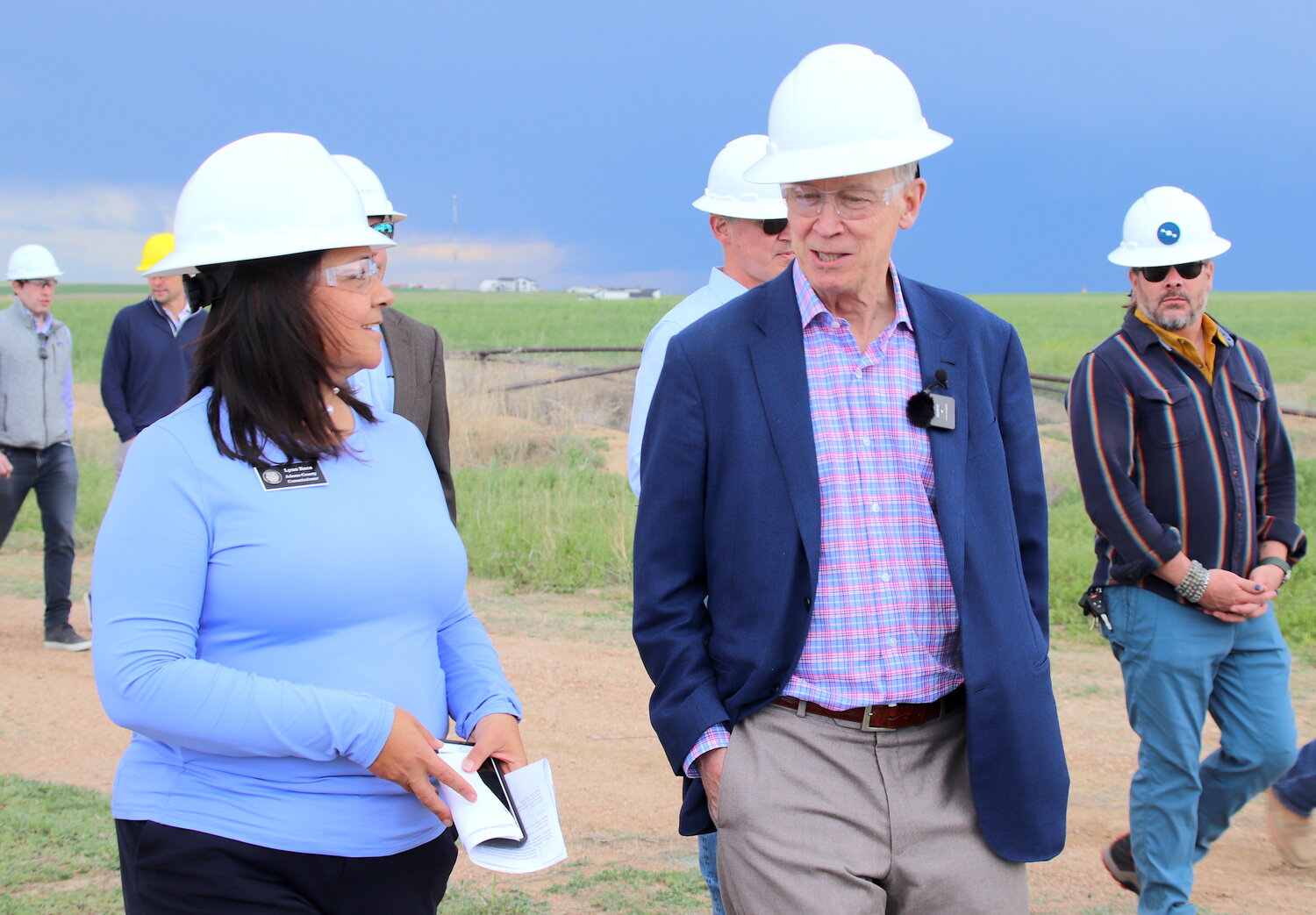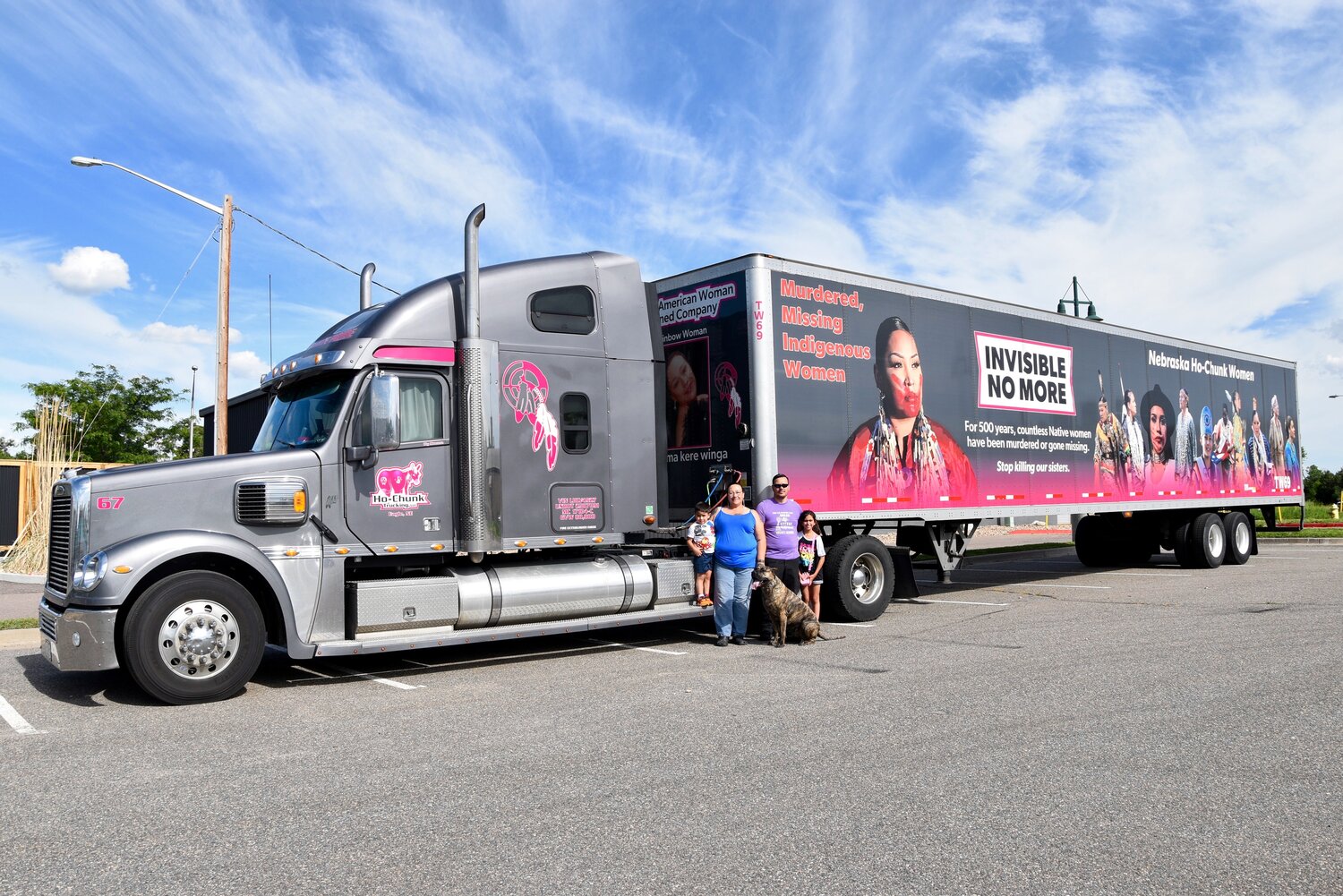Plugging orphaned wells: County, Hickenlooper wants to cap abandoned drilling sites

Beyond the rusting rigs and the pumps and tanks littered around the site, an abandoned oil well is pretty much indistinguishable from a working site.
It’s what exists under that equipment that has county officials concerned.
“Every oilfield looks different,” Adams County Commissioner Lynn Baca said May 25 standing at an orphaned well site about 11 miles due east from Brighton’s Barr Lake. “This particular one has some outbuildings and it can have lines in the ground. So mitigating that, cleaning it up, we estimate it will take about $150,000 per well to do that. So with 304 abandoned wells in Adams County, we can’t do that. It’s not fair to make the taxpayers carry that burden.”
Adams County hosted a tour on May 25 of the well site in an unincorporated part of the county. Called the Greenmeier #9-30 site, it features a rusting wellhead and pump jack connected to nearby production equipment and four tanks via a series of underground pipes and flowlines.
U.S. Senator John Hickenlooper, an advocate of capping and clearing those abandoned sites, was the guest of honor as county officials joined with industry experts to demonstrate the steps they must go through to close the county’s abandoned wells once and for all.
“Orphan wells are a constant nagging source of pollution,” Hickenlooper said. “But they are also ticking timebombs especially when they are out in areas that never really became big plays. You have a lot of wells that were built by small operators who didn’t have the resources to properly plug them and make sure they don’t have methane leaking out for the next decade.”
Counting orphans
According to the Colorado Oil and Gas Conservation Commission’s data, Adams County has 4,617 drilled wells. Of that, 2,895 have been abandoned and plugged.
Commissioner Baca, who is also a member of the state’s Orphan Wells Mitigation Enterprise Board, said orphaned wells that remain unplugged are a different kind of problem, and Adams County has more than 300 of them scattered around the county.
Commissioner Baca said the site is a perfect example of an orphaned well. It was first drilled in 1975 but was abandoned in 2018. That means the owners and operators simply walked away, leaving all the equipment above ground to rust and flow lines underground to leak.
“The well operator declared bankruptcy and had to walk away and now we are trying to get it cleaned up,” Baca said. “Sites like this can stay toxic for years. The challenge for Adams County is that we are in the Denver Metro area and we are in a federal non-attainment area already. And when we have wells that emit toxic gases incessantly, it affects our air quality. I know we are standing in a field in unincorporated Adams County, but orphaned wells are found throughout Adams County, not just the unincorporated areas.”
Adams County has a partnership with Civitas Resources, Greenfield Environmental Solutions and CarbonPath to find those sites, determine if they are leaking chemicals and where and then get them cleaned up. Those companies are working together to clean up nearly 50 orphaned well sites around northeastern Colorado, including in Adams County.
The process involves surveying the site with the latest chemical-seeking equipment, and Greenfield’s Chris Rice demonstrated how they zero in on leaks with infrared cameras and a series of sensors that pull in the air and use lasers to determine their chemical makeup. They can determine where the leak is coming from, what it’s leaking and determine how best to cap it and get the site cleaned up.
“We can go use this project as a headline moment, an example for others, on a private-public partnership that we can use to tackle all the orphaned wells across the United States and, of course, across Colorado,” CarbonPath CEO Tyler Crabtree said. “What we do is provide additional a bridge to find additional private funding to supplement federal dollars. Essentially, for every well that gets plugged up with federal dollars, we want to raise money from private citizens and corporations to do their part to plug another well site.”
The state created the Orphan Wells Mitigation Enterprise in 2022, requiring well operators to pay a fee — $225 per well that produces more than 15 barrels of oil or 22 MCF of natural gas per day and $125 that produces less than that. It’s expected to generate $10 million per year to help clean up orphaned wells.
The U.S. Department of the Interior has set aside another $25 million to help Colorado to locate and clean up the wells. Both of Colorado’s Senators, Hickenlooper and Michael Bennet, have been strong advocates for getting the wells closed nationally.
“Getting a program like this was a high priority in the bipartisan infrastructure bill,” Hickenlooper said. “One way to get into that bill was to make sure we look at the entire nation and how much methane and other escaping hydrocarbons are getting into the air from those wells that are not producing anything.”
Weld, Adams and Arapahoe counties are responsible for the vast majority of oil and natural gas pulled from the Colorado ground — with Weld County outproducing everyone. In 2022, wells in Weld County produced 131.8 million barrels of oil and 976.9 million MCF of natural gas — 82% of all oil produced in Colorado that year and 51% of all natural gas. Adams County produced 9.6 million barrels of oil and 37.2 million MCF of natural gas in 2022, a distant second in Colorado oil production behind Weld and sixth place in natural gas behind Weld, Garfield, La Plata, Rio Blanco and Las Animas counties.












